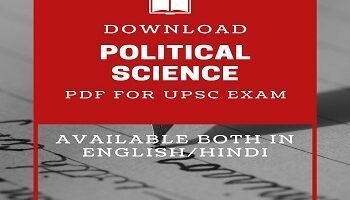Types of Audit:
The broad aim of the audit is to safeguard the financial interests of the taxpayers and to assist the parliament or a state legislature in exercising financial control over the executive. An audit is an instrument of legislative control. It can be of several types:
(1) Financial Audit- Financial audit is undertaken to see whether the administrative action of the executive is not only in conformity with prescribed law, financial rules, and procedures but also proper and does not result in any extravagance. A financial audit is not directly concerned with the administrative procedures of the administrative organization. It interferes only when the administrative action has serious financial implications and is not in conformity with the prescribed laws, financial rules and safeguards, and the interests of the taxpayers by bringing to the notice of the parliament any wastage in governmental expenditure.
(2) Regularity Audit- Regularity audit consists mainly in checking that payments have been duly authorized and are supported by proper vouchers in prescribed forms. Its main purpose is to ensure conformity with the relevant administrative, financial, budgetary, and accounting rules and regulations provided for in the Constitution or the laws made by the parliament. It examines whether the provision of funds for expenditure is duly authorized or not. A regularity audit is done to ensure that each item of expenditure is covered by a sanction of the competent authority. It also ensures that the expenditure conforms to the relevant provision of the constitution/law.
(3) Receipt Audit- Receipt audit involves the audit of income tax, customs, and excise receipts at the state level. It involves the audit of state tax and state excise receipts at the province level. The function of a receipts audit is to ensure that adequate regulations and procedures have been framed and are being observed by the revenue department to secure an effective check on assessment, collections, and proper allocation of revenue.
(4) Performance Audit- Performance audit seeks to find out whether the resources have been utilized efficiently by devolving them in an optimum manner or not. It examines the achievements of specific programmes, activities, and projects in terms of their goals or objectives. For example in India, the government has been launching Five Year Plans at regular intervals. Investment on a large scale is continuously being made in developmental activities for accelerating the process of socioeconomic development. Therefore, the public has the right to know the results of such investments. When Audit examines this aspect of financial investment, expenditure, and fund utilization, it is called Performance Audit.
All these types of audits are used in practice for exercising control over the financial activities of the government. Even private business enterprises have to get their accounts audited by authorized and competent chartered accountants/agencies.
An audit is the watchdog against financial irregularities and dishonesty. Its purpose is to ensure that expenditure is in accordance with the laws and rules and is supported by required vouchers. It is to judge the economy and propriety of all expenditures incurred by all the departments of the government. While the auditors normally do not examine the merits of expenditure incurred, they do point out financial irregularities and lapses. An adverse audit report is always a source of strain and pressure on the department, particularly the administrator who heads the department or any of its units, and under whose supervision/authority the expenditure has been incurred.
An audit also reports:
- Whether the public servants incurring the expenditure have observed due vigilance and care or not.
- Whether the public money has been spent for the benefit of the intended clientele or not.
- Whether the expenditure has been incurred fairly and honestly or not.
These aspects are examined for verifying the financial propriety of financial transactions. The auditing agency always submits a report of its findings to the legislature of the state.









Comments (No)